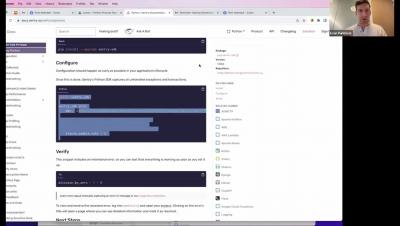Operations | Monitoring | ITSM | DevOps | Cloud
August 2023
Making your JavaScript projects less noisy
If you’re using Sentry for JavaScript error monitoring, you may be familiar with a common challenge: sifting through noisy, low-value errors that hinder identifying high-priority issues for you and your team. Capturing errors in JavaScript browser project can be tricky. Why? Well, it’s not just a single environment.
Introducing Rage & Dead Click Detection for Session Replay
Sentry developers work ridiculously hard to make sure that every update makes the developer experience better. And, just like you, we use Sentry to monitor…Sentry. While our issues feed seems under control, alerts aren’t popping off, and our releases are all healthy, our experience has taught us the undeniable value of taking a proactive approach to unseen customer-impacting issues.
Writing your first Javascript test
Sentry Profiling now supports Browser Javascript, React Native, and Ruby
Profiling is an essential component of a developer’s toolkit for identifying and addressing the thorniest performance bottlenecks. Whether you’re a backend developer looking to cut down cloud infrastructure costs, a frontend developer trying to speed up page load times, or a mobile app developer working to ensure smooth scrolling for users, Sentry Profiling pinpoints hot code paths in your production environment, so you can identify and optimize the slowest parts of your code.
An Introduction to Frontend Testing
July Product Updates for Sentry
During the past month of July, the Sentry dev team dropped new capabilities to help you better understand, prioritize, and respond to errors and performance problems. From new ways of sorting priority issues to helping you be more proactive in identifying problems earlier in the dev lifecycle, we’ve picked a handful of recent releases to dive into. Plus we’ll highlight a couple of new integrations with our friends at Slack and Atlassian.








